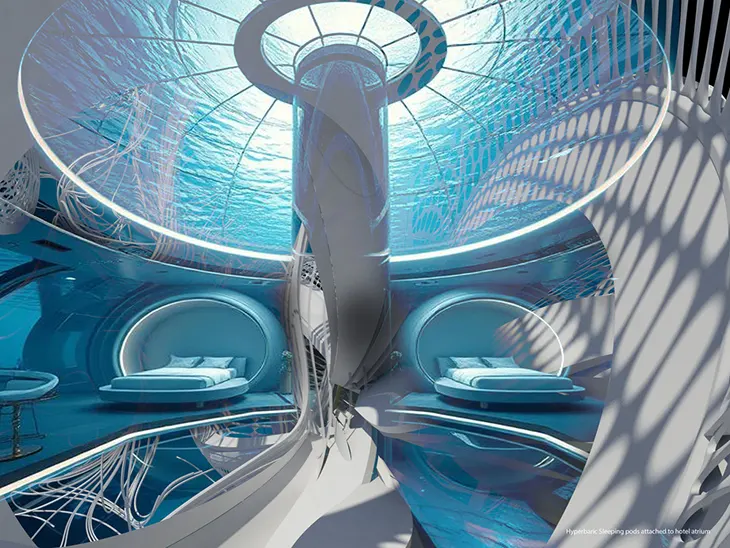
In an era of intensifying climate extremes, architect Margot Krasojević presents a radical new vision for hospitality with the Tsunami Submersible Emergency Hotel. Situated in the Pacific Ocean, approximately fifty miles off the coast of Taiwan and 150 miles from China’s volcanic arc, the concept defies conventional hotel architecture. Instead, it borrows heavily from marine engineering, offering a floating, fully submersible hotel designed to survive, and adapt, in the face of tsunamis.
ARCHITECTURE
Inspired by sleeping humpback whales, submarine vessels, and tension-leg oil rigs, the hotel’s structure features three vertical units tethered to the ocean floor. Each can retract and submerge beneath the surface when needed, reducing exposure to tsunami wave peaks and leveraging ocean depth to absorb pressure safely. Inflatable façade elements double as buoyancy stabilizers, expanding like marine life vests to assist in resurfacing and maintaining equilibrium after submersion.
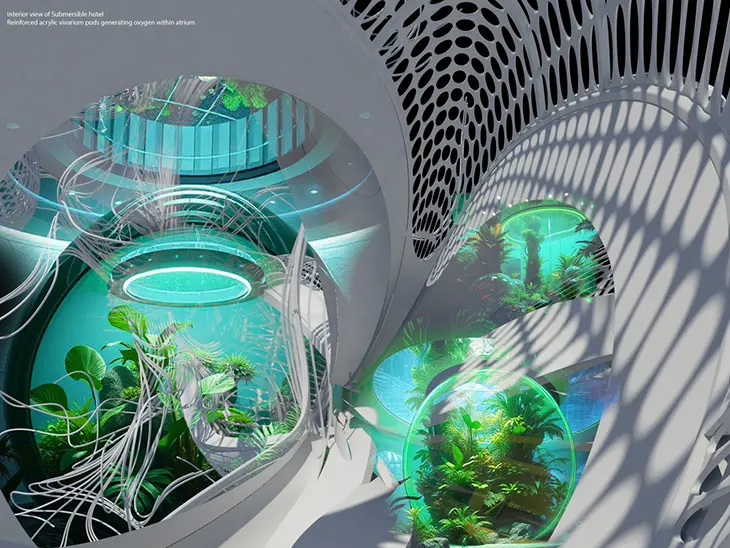
Internally, each room is outfitted with a hyperbaric chamber, allowing guests to adjust to changes in atmospheric pressure while submerged. The hotel also integrates photonic wind turbines mounted on masts, equipped with fiber-optic sensors, to monitor temperature, vibration, and strain in real time, optimizing energy production and predictive maintenance. These high-tech structures act much like tentacles of a giant squid, helping to balance and distribute the hotel’s mass while floating offshore.
Rather than replicating the coastal resort model, the Tsunami Hotel embraces remoteness. Access is limited to helicopter or boat, turning the journey into part of the experience. For travelers seeking escape from hyper-tourism and overcrowded beach destinations, it offers a futuristic alternative, a floating refuge that merges sustainability, science, and seclusion.
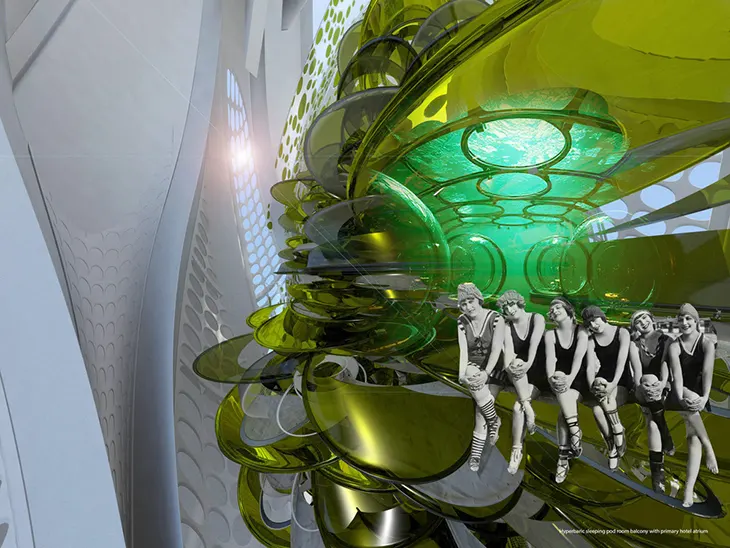
Krasojević’s design presents a speculative solution to the realities of rising sea levels and increasing environmental volatility. By reimagining architecture through the logic of marine technology, the project signals a new typology, one where resilience becomes the luxury.
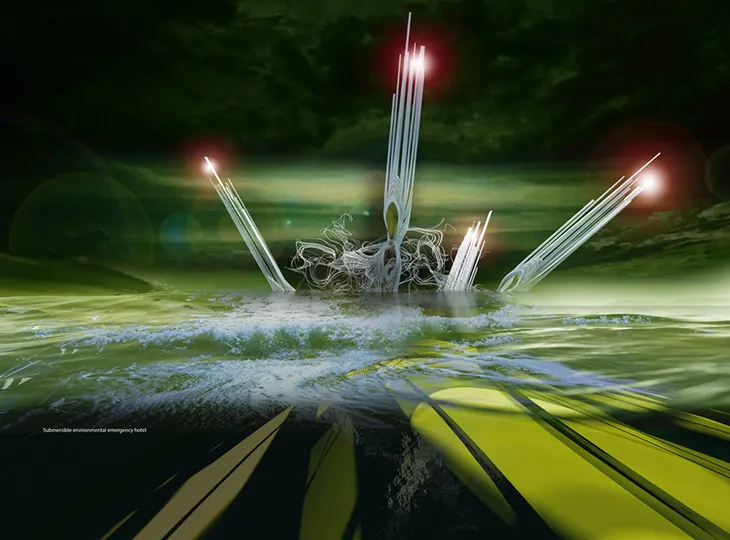
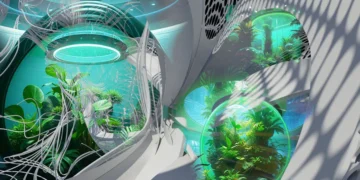













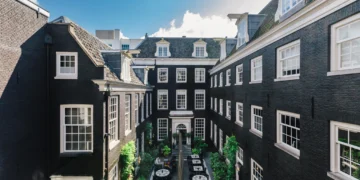
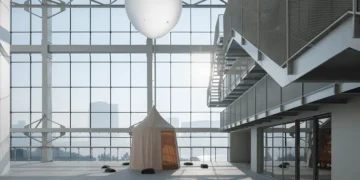
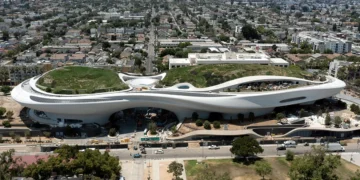
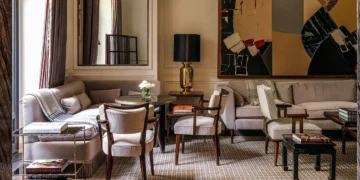
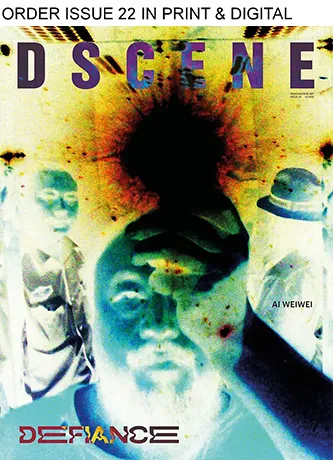

Not sure if there’s still an actual need for this but architects have to know what are the dangers of a location and work on a preventive design no matter a hotel shop or a home